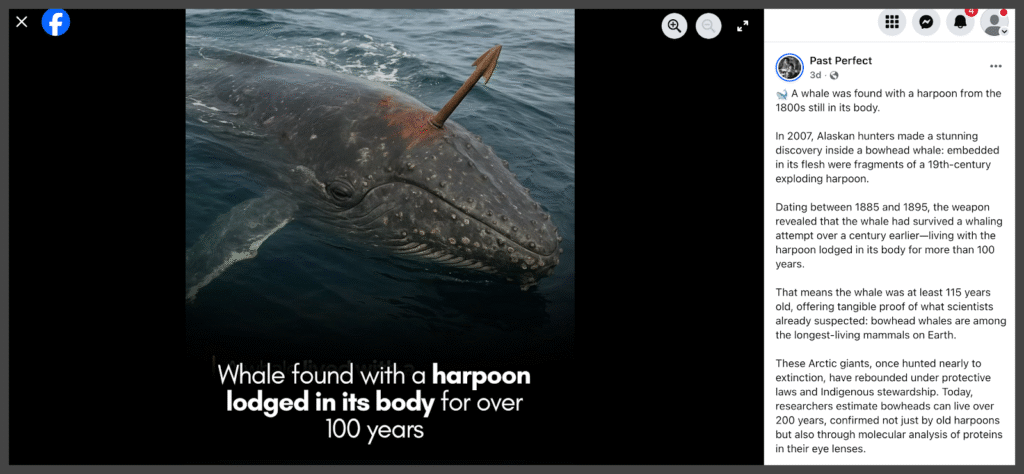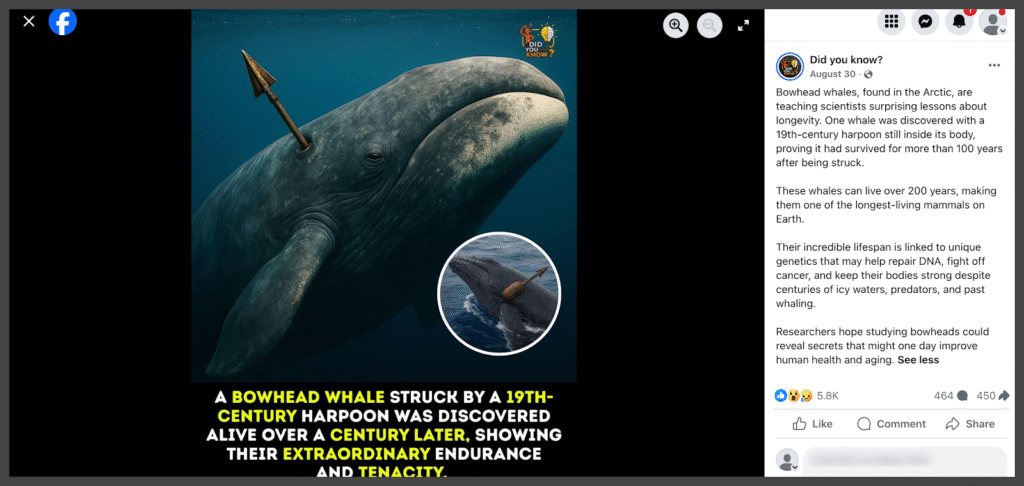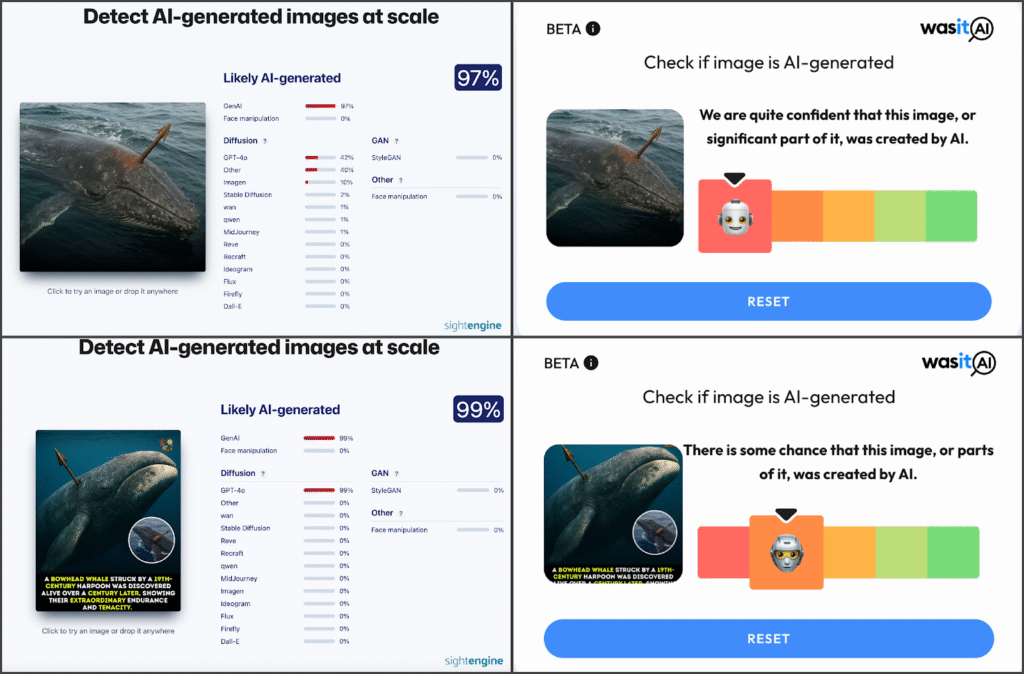
A social media post claims a whale was found with a harpoon lodged in its body for over a hundred years. The post suggests this is evidence of long whale lifespans. Upon investigation, we found that the images accompanying the claim does not actually depict this discovery.
Social Media Posts
Recently, multiple social media users shared a story about a whale found with a harpoon from the 1800s still embedded in its body, accompanied by pictures of a whale with a spear in its head.


Fact Check
The Discovery in Alaska
In 2007, Inupiat hunters in Alaska caught a 50-ton bowhead whale and discovered a metal fragment embedded deep in its blubber and bone near the neck and shoulder blade. Experts later identified the object as part of an exploding harpoon tip, known as a “bomb lance,” that had been manufactured in New Bedford, Massachusetts around 1879–1880, when whaling in the Arctic was still common. Reports from Reuters, CBS, and the Telegraph all confirm that the fragment was about three and a half inches long and was lodged in the whale for more than a century.
Scientists used the harpoon fragment to determine the whale’s age. The weapon was manufactured in the late nineteenth century, meaning the whale must have survived being struck by it during an earlier hunt. According to wildlife biologist Craig George from the North Slope Borough Department of Wildlife Management, this evidence suggests the whale was between 115 and 130 years old when it died. This finding is consistent with other scientific research, including amino acid studies of whale eye lenses, which indicates bowhead whales can live for more than a century and potentially reach nearly 200 years of age.
The discovery provided one of the clearest pieces of physical evidence for the extraordinary longevity of bowhead whales. While scientists had long believed the species was among the longest-lived mammals, the bomb lance fragment served as tangible proof that these whales can survive not only natural conditions but also survive injuries from nineteenth-century hunting technology. The fragment was later preserved and displayed at the Inupiat Heritage Center in Barrow (now Utqiaġvik), Alaska, as both a cultural and scientific artifact.
Misrepresentation in Viral Posts
Although the core fact, that a nineteenth-century harpoon fragment was found in a bowhead whale in Alaska in 2007, is true, many viral posts online misrepresent the discovery with misleading imagery. Instead of showing authentic photographs of the harpoon fragment, which exist in news archives and museum collections, posts often use AI-generated or digitally altered illustrations of whales with oversized harpoons lodged in their bodies.
No credible source uses that image: Although this discovery was reported by many credible news sources, none of them used the image that has been circulating on social media. Instead, coverage by outlets such as Reuters, CBS, and the Telegraph relied on reporting and a photograph of the recovered weapon fragment. In fact, the only genuine image available publicly are those showing the antique harpoon parts found in the whale, such as those published in the Telegraph’s report.

Credit: Associated Press (AP)
Signs of AI or manipulation: The viral image shows exaggerated features inconsistent with normal wildlife photography, such as an outsized harpoon, unnatural lighting, and overly sharp textures. Genuine field photographs would typically show more realistic lighting, blending, motion blur, and water clarity artifacts. To confirm this, AI image-detection tools such as Sightengine and WasItAI were applied, both indicating that the pictures were highly likely to have been generated by artificial intelligence.

Conclusion
While the story of the whale with the nineteenth-century harpoon fragment is fascinating and scientifically verified, the images commonly associated with this discovery online are misleading. The authentic evidence consists of the recovered harpoon fragment itself, not dramatic photographs of whales with visible harpoons protruding from their bodies. This case demonstrates the importance of critically evaluating both the textual claims and visual evidence when encountering viral stories online.

Title:Whale With 19th-Century Harpoon Is Real, But Viral Images Are Misleading
Fact Check By: PranpreeyaResult: Insight






